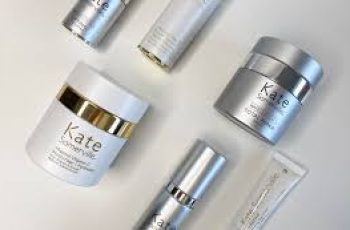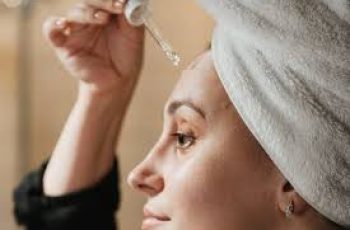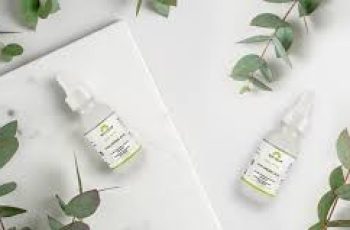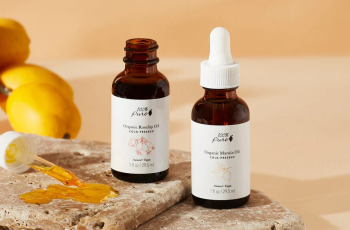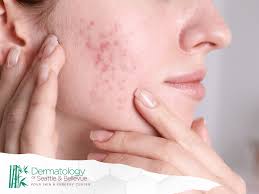



Filler for Acne Scars: Everything to Know About the Minimally Invasive Treatment


Acne scars can feel like uninvited guests that show up and refuse to leave. After a pimple heals, your skin often doesn’t fully recover its smooth texture.



Instead, it may be left with marks that are red, raised, pitted, or discolored. This happens because your skin’s repair process isn’t always perfect.


Fortunately, advances in dermatology have introduced new ways to tackle these scars. Dermal fillers have emerged as a minimally invasive and effective option to help reduce the appearance of acne scars.



They work by filling in depressions and grooves left by healed pimples, restoring volume and smoothness to your skin.


If you’re tired of stubborn acne scars and want to explore treatment options, this article will guide you through everything you need to know about using fillers for acne scars.



We’ve included insights from dermatologists and plastic surgeons to help you make informed decisions.


What Are Acne Scars and How Do They Form?



Acne scars occur when inflammation from acne damages the skin tissue. During the healing process, collagen — the protein that gives skin its structure and elasticity — may be lost or unevenly produced.


This leads to changes in the skin’s texture and appearance.



There are several types of acne scars:


Atrophic scars: These are depressed scars or pits where skin volume is lost. They appear as indentations or craters on the skin’s surface.



Hypertrophic scars: These are raised scars caused by excess collagen production, often firm and thickened.


Hyperpigmentation: Dark spots or discoloration left behind after acne clears. This is not technically a scar but a pigment change.



Among these, atrophic scars are the primary target for filler treatments because fillers add volume back to depressed areas, making skin look smoother.


Meet the Experts



To provide the most accurate and helpful information, we spoke with several leading experts in the field:


Dr. Ruth McTighe, MD — Board-certified dermatologist at Waccamaw Dermatology in South Carolina.



Dr. Saami Khalifian, MD — Double board-certified dermatologist and Mohs micrographic surgeon at Som Aesthetics.


Dr. Steven Dayan, MD — Double board-certified plastic surgeon at Impressions Chicago: Face + Body.



Their insights underline how dermal fillers are increasingly trusted to treat acne scars effectively and safely.


Why Are Fillers a Popular Choice for Acne Scars?



Dermal fillers offer several advantages when it comes to improving acne scars:


Immediate Results: Many fillers provide visible improvements right after treatment.



Minimally Invasive: Unlike surgery, fillers require only injections, with minimal downtime.


Volume Restoration: Fillers physically fill the indentations left by scars, smoothing skin texture.



Stimulate Collagen: Some fillers encourage your skin to produce more collagen, enhancing skin quality over time.


Dr. Khalifian explains, “Fillers restore both form and function to acne-scarred skin by replacing lost volume.”



However, it’s important to know that this use of fillers is considered “off-label,” meaning they’re FDA-approved for other purposes but commonly used by experts for acne scars.


Fillers work best on scars that create depressions or pits. They are not the solution for raised or thickened scars.

Types of Fillers Used for Acne Scar Treatment
Bellafill
Bellafill is the only dermal filler FDA-approved specifically for long-term treatment of moderate to severe atrophic acne scars.
It contains bovine collagen (derived from cows) and polymethyl methacrylate (PMMA) microspheres.
These microspheres provide a scaffold that supports your skin, encouraging natural collagen growth. Bellafill is only available for patients over 21 and offers a durable correction lasting up to five years.
Hyaluronic Acid Fillers (Juvederm, Restylane)
Hyaluronic acid (HA) fillers are among the most popular types of dermal fillers for acne scars. They add immediate volume, smoothing out depressed scars and stimulating collagen production.
HA fillers are biodegradable and typically last from six months to 18 months. They are praised for their safety profile and reversible nature (an enzyme can dissolve HA fillers if needed).
Dr. McTighe highlights, “Results can be seen the same day, and the procedure is relatively painless with topical numbing.”
Poly-L-Lactic Acid (Sculptra)
Sculptra is a collagen stimulator that works gradually by triggering your skin to produce new collagen. Unlike HA fillers, you won’t see immediate results; improvements appear over several months.
Sculptra is a great option if you want longer-lasting, natural-looking improvements. It can help improve overall skin texture and volume beyond just filling scars.
Radiesse (Calcium Hydroxylapatite)
Radiesse provides immediate volume boost using calcium hydroxylapatite microspheres suspended in a gel. It also promotes collagen and elastin production for long-term benefits.
When diluted, Radiesse can be tailored to provide both quick lifting and gradual improvement, making it versatile for treating acne scars.
How Much Does Treatment Cost?
The cost of filler treatments for acne scars depends on:
Type of filler used
Number of syringes needed
Provider’s expertise and location
On average, prices range from $600 to $1,200 per syringe. Most patients require multiple syringes and sessions for optimal results.
Because fillers are temporary (except for Bellafill), repeat treatments are usually necessary every 6 to 24 months. Your doctor will tailor a plan based on your skin and scar severity.
The Procedure: What to Expect
Your journey starts with a thorough consultation. Your provider will assess your scars and overall skin health to determine if fillers are suitable for you.
Because treating acne scars with fillers is off-label, it’s essential to choose a provider experienced in this technique. The injection approach differs from typical filler placements for wrinkles or volume loss.
On the day of treatment:
The area will be cleansed and prepped.
A topical numbing cream is applied to minimize discomfort.
Using a fine needle or blunt cannula, the filler is carefully injected into each scar depression.
The provider may massage the area gently to smooth out the filler and achieve the best contour.
The whole process usually takes between 30 and 60 minutes.
You can typically return to your daily activities immediately, although mild swelling or bruising might occur.
Potential Side Effects and Risks
Most patients tolerate filler treatments well. The most common side effects are:
Redness, Swelling, Bruising, Tenderness at injection sites
These usually resolve within a few days. Less commonly, bumps under the skin, discoloration, or prolonged swelling can happen.
Rare risks include infection, allergic reactions, or vascular complications (when filler accidentally enters a blood vessel). That’s why selecting a highly trained and experienced injector is vital.
Always follow your provider’s aftercare instructions to reduce side effects and ensure the best healing environment.
Are Fillers Safe During Pregnancy?
Currently, there is limited research on dermal fillers during pregnancy. Most experts recommend avoiding elective cosmetic procedures, including fillers, during pregnancy and breastfeeding as a precaution.
If you’re pregnant or planning to become pregnant, discuss your options with your healthcare provider to ensure your safety and that of your baby.
Alternatives to Fillers for Acne Scars
Fillers are a powerful option but not the only one. Depending on your scar type and goals, your provider might suggest:
Microneedling: Uses tiny needles to trigger collagen production and skin renewal.
Chemical Peels: Removes outer skin layers to improve discoloration and texture.
Laser Resurfacing: Ablative and non-ablative lasers can stimulate collagen and smooth scars.
Microdermabrasion: A milder exfoliation treatment for surface scars.
Fat Transfer: Your own fat is harvested and injected to fill depressions naturally.
Subcision Surgery: A minor surgical technique that releases scar tissue beneath the skin, allowing the skin to rise.
Often, combining treatments leads to the best outcomes. Dr. Dayan notes, “Laser resurfacing and fat transfer combined with fillers can create more dramatic and lasting improvements.”
Aftercare Tips for Dermal Fillers
Following your filler appointment, you can optimize your results by:
Avoiding excessive sun exposure and using sunscreen daily.
Refraining from strenuous exercise for 24-48 hours.
Not applying heavy makeup immediately after treatment.
Keeping the treated area clean and avoiding touching or massaging it unless advised.
Monitoring for signs of complications and contacting your provider if any concerns arise.
Good skincare habits will help maintain your skin’s health and prolong the benefits of filler treatments.
The Final Takeaway
Dermal fillers have revolutionized the approach to treating acne scars, offering a minimally invasive way to restore volume and smoothness to damaged skin.
They are particularly effective for depressed, atrophic scars and can produce immediate or gradual improvements.
While not FDA-approved specifically for acne scars (except Bellafill), many dermatologists and plastic surgeons successfully use fillers off-label for this purpose.
Choosing a qualified, experienced provider is critical to ensuring safety and achieving the best possible results.
If you’re interested in filler treatment for acne scars, book a consultation to explore your options and start your journey to clearer, smoother skin.
